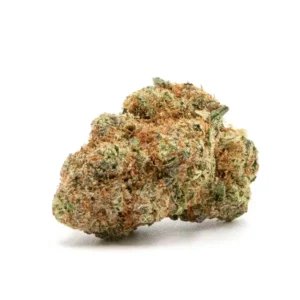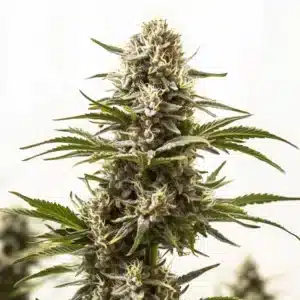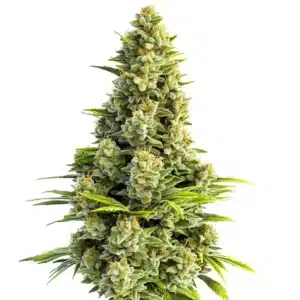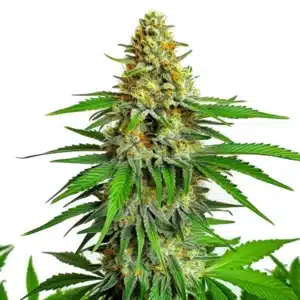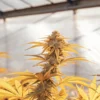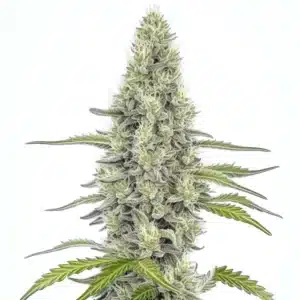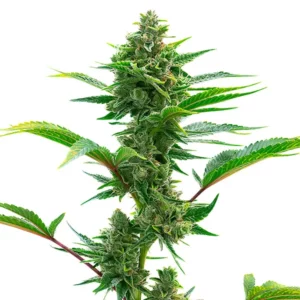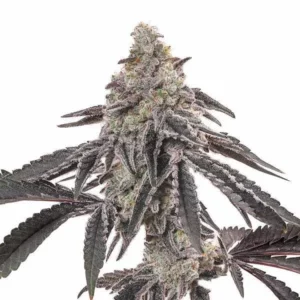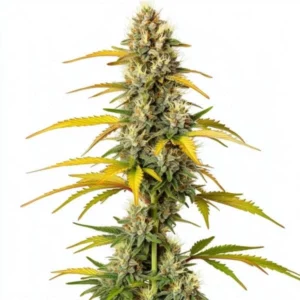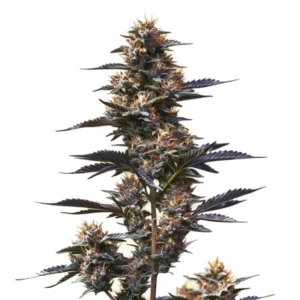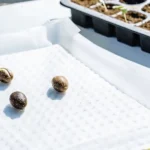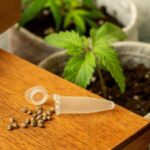
Growing Cannabis in a Greenhouse
Why Growing Cannabis in a Greenhouse Is a Game-Changer
Growing cannabis in a greenhouse blends the control of indoor methods with the natural advantages of outdoor growing. If you’re aiming to maximize yield, quality, and consistency, this strategy is a game-changer. Growing cannabis in a greenhouse can elevate your cultivation efforts to new heights, providing an environment where your plants can thrive.
The Perfect Balance Between Nature and Control
Greenhouses harness the power of the sun while maintaining a controlled environment. This balance creates ideal conditions for growing cannabis in a greenhouse. Unlike indoor grows that rely entirely on artificial light, greenhouses provide natural light that’s hard to replicate. This natural light promotes robust growth and maximizes cannabinoid and terpene production, resulting in superior-quality buds.
Recommended Strains
Sleepy Joe
|
|
THC | 32% - 34% (High) |
|
|
Type | Feminized |
|
|
Yield | High |
|
|
Phenotype | 80% Indica / 20% Sativa |
Cost-Effective Cannabis Cultivation: How Growing Cannabis in a Greenhouse Saves You Money
Growing cannabis in a greenhouse offers significant cost savings. Greenhouses reduce the need for expensive lighting and climate control systems, leading to lower energy bills. Additionally, greenhouses allow you to extend the growing season, enabling multiple harvests per year without the high operational costs of indoor cultivation. By leveraging the sun’s free energy, you save money and reduce your environmental impact all while producing high-quality cannabis. This makes growing cannabis in a greenhouse a smart financial choice.
Promos & Deals
Setting Up Your Greenhouse: Laying the Foundation for Successful Cannabis Growing
Setting up a greenhouse for cannabis cultivation requires careful planning. The success of growing cannabis in a greenhouse depends on the design and functionality of your setup. It’s essential to get it right from the start to ensure a bountiful harvest and optimize your efforts.
Choosing the Best Location
The location of your greenhouse plays a critical role in the success of your cannabis grow. Choose a spot that receives plenty of sunlight throughout the day. Ideally, your greenhouse should capture the maximum amount of sunlight, especially during the growing seasons. Additionally, consider factors such as wind exposure, drainage, and proximity to utilities like water and electricity. These considerations are crucial for growing cannabis in a greenhouse effectively.
Selecting the Right Structure for Growing Cannabis in a Greenhouse
Greenhouses come in various shapes and sizes, each offering its own set of advantages for growing cannabis in a greenhouse. Consider your specific needs and goals when selecting a structure. For example, hoop houses are popular due to their affordability and ease of construction. They provide excellent ventilation and can adapt to different climates. More permanent structures, like glass or polycarbonate greenhouses, offer better insulation and durability, making them suitable for year-round cannabis cultivation in a greenhouse setting.
Climate Control Essentials for Successful Cannabis Greenhouse Cultivation
Climate control is crucial for growing cannabis in a greenhouse. While greenhouses offer some natural climate regulation, you’ll still need to manage temperature, humidity, and airflow. Installing fans, vents, and heaters helps maintain a consistent environment, ensuring your plants have the optimal conditions to thrive. Consider using shade cloths or automated shading systems to protect your plants from excessive heat during the summer months. Proper climate control is key to successful.

Soil vs. Hydroponics: Best Growing for Cannabis Plants in a Greenhouse
The growing medium you choose impacts the health and productivity of your cannabis plants. Whether using soil or hydroponics, the best choice depends on your goals for growing cannabis in a greenhouse.
The Advantages of Soil-Based Growing in a Greenhouse
Growing cannabis in soil remains popular for many reasons. Soil provides a natural, supportive environment for roots. It’s easy to work with, especially for beginners. Soil also contains beneficial microorganisms that help break down organic matter and provide nutrients to your plants. Cannabis grown in soil often has a rich, complex flavor profile, thanks to the natural interaction between the plant and the soil ecosystem. This makes soil a preferred medium for growing cannabis in a greenhouse.
Hydroponic Systems: A Space-Efficient Solution for Growing Cannabis in a Greenhouse
Hydroponic systems offer several advantages for growing cannabis in a greenhouse. By using a nutrient-rich water solution instead of soil, hydroponics allows precise control over nutrient intake. This method results in faster growth and higher yields. Hydroponic systems are also more space-efficient and reduce the risk of soil-borne pests and diseases. However, they require more technical knowledge and a higher initial investment, which can be a barrier for some growers looking to start growing cannabis in a greenhouse.
Combining Soil and Hydroponics for Optimal Results in Greenhouse Cannabis Cultivation
Some growers combine soil and hydroponics for the best results when growing cannabis in a greenhouse. For example, you might grow cannabis in soil for its natural benefits and then supplement with hydroponic techniques during the flowering stage. This boosts nutrient uptake and maximizes yield. This hybrid approach offers the best of both worlds, giving you flexibility and allowing you to adapt to different conditions and goals in your greenhouse cannabis cultivation.
Lighting in Greenhouses
Lighting is crucial in cannabis cultivation. Growing cannabis in a greenhouse allows you to take full advantage of natural sunlight. However, optimize light exposure is key to maximizing yield when growing cannabis in a greenhouse.
Maximizing Sunlight Exposure for Cannabis Growth in a Greenhouse
The primary advantage of growing cannabis in a greenhouse is access to natural sunlight, which provides a full spectrum that artificial sources can’t fully replicate. Position your greenhouse to capture the most sunlight, ensuring your plants receive adequate light throughout all growth stages. Natural light not only promotes vigorous growth but also enhances the cannabinoid and terpene profiles, resulting in more potent and flavorful buds when growing cannabis in a greenhouse.
When to Use Supplemental Lighting in Your Greenhouse Cannabis Setup
While natural light is invaluable, there may be times when supplemental lighting is necessary. This is especially true during winter months or in regions with less sunlight. Supplemental lighting ensures that your plants receive the consistent light they need to thrive. LED grow lights are an excellent option for greenhouses. They are energy-efficient and produce minimal heat. Use them strategically to extend daylight hours or provide a boost during cloudy days. This approach is essential for growing cannabis in a greenhouse where light consistency is key.
Managing Photoperiods for Successful Cannabis Cultivation in a Greenhouse
Cannabis plants are sensitive to changes in light exposure. Photoperiods is crucial for successful growing cannabis in a greenhouse. During the vegetative stage, your plants require longer daylight hours (typically 18 hours of light and 6 hours of darkness). As they transition to the flowering stage, reducing light exposure to 12 hours of light and 12 hours of darkness triggers flowering. In a greenhouse, you’ll need to manage these photoperiods carefully, potentially using blackout curtains or light deprivation techniques.
Ventilation and Airflow
Proper ventilation and airflow are critical for maintaining a healthy environment when growing cannabis in a greenhouse. Stagnant air can lead to a buildup of humidity, encouraging mold and mildew growth. Insufficient airflow can cause heat stress and other issues.
Importance of Fresh Air in Growing Cannabis in a Greenhouse
Fresh air is essential for healthy cannabis plants. It provides the necessary carbon dioxide for photosynthesis and helps regulate temperature and humidity levels. Ensure your plants have a constant supply of fresh air. Achieve this through a combination of natural ventilation (such as windows and vents) and mechanical ventilation (such as fans and exhaust systems). The goal is to create a consistent flow of air throughout the greenhouse, preventing hot spots and ensuring that all plants receive adequate airflow when growing cannabis in a greenhouse.
Effective Strategies for Greenhouse Ventilation in Cannabis Cultivation
There are several strategies you can use to improve ventilation in your greenhouse. Consider the placement of windows, vents, and doors to maximize natural airflow. Opening vents at the top allows hot air to escape, while lower vents or doors bring in cooler air from the outside. Fans can also help circulate air, especially in larger greenhouses. Oscillating fans create a gentle breeze that mimics natural outdoor conditions, helping to strengthen plant stems and improve overall growth when growing cannabis in a greenhouse.
Managing Humidity Levels in Your Greenhouse for Optimal Cannabis Growth
Humidity control is another critical aspect of growing cannabis in a greenhouse. Cannabis plants thrive in a specific humidity range, typically between 40% and 60% during the vegetative stage and slightly lower during flowering. Too much humidity can lead to mold and mildew, while too little can cause plants to dry out and become stressed. To maintain the ideal humidity levels, consider using dehumidifiers or humidifiers as needed, and monitor humidity levels regularly using a hygrometer.
Watering and Irrigation
Watering is one of the most critical aspects of greenhouse cultivation. Ensuring your plants receive the right amount of water at the right time is essential for healthy growth and maximum yield when growing cannabis in a greenhouse.
Watering Basics for Healthy Cannabis Growth in a Greenhouse
Cannabis plants need consistent moisture to thrive, but overwatering can be as harmful as underwatering. The key is to find the right balance, providing enough water to keep the soil or growing medium evenly moist without becoming waterlogged. In a greenhouse, factors such as temperature, humidity, and light exposure can all impact how much water your plants need, so it’s important to monitor conditions closely and adjust your watering schedule accordingly.
Implementing an Irrigation System
An irrigation system can help ensure that your cannabis plants receive consistent and adequate water, even if you’re not able to water them manually every day. Drip irrigation systems are particularly popular among greenhouse growers. They deliver water directly to the root zone, reducing water waste and preventing overwatering. Additionally, automated irrigation systems can be set on timers to water your plants at specific intervals, ensuring they receive the right amount of water at the right time. This consistency is vital for growing cannabis in a greenhouse.
The Importance of Water Quality
The quality of the water you use is just as important as the quantity. Cannabis plants are sensitive to impurities and contaminants in water, so it’s essential to use clean, filtered water whenever possible. If you’re using tap water, consider testing it for pH levels and any harmful chemicals or heavy metals. You may need to adjust the pH of your water to ensure it falls within the optimal range for cannabis, typically between 6.0 and 7.0 for soil and 5.5 to 6.5 for hydroponics. Quality water is key to successful growing cannabis in a greenhouse.
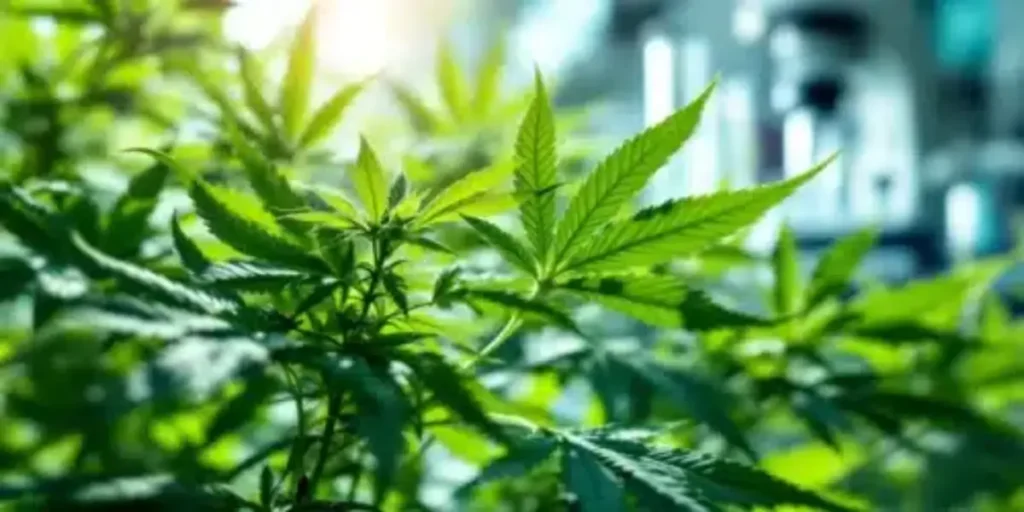
Fertilization: Providing Nutrients for Optimal Cannabis Growth in a Greenhouse
Proper fertilization is crucial for growing healthy, high-yielding cannabis plants in a greenhouse. By providing your plants with the right nutrients at the right time, you can ensure robust growth, vibrant buds, and maximum potency.
Nutrient Needs for Cannabis Cultivation in a Greenhouse
Cannabis plants require a variety of nutrients to grow and thrive, including macronutrients (such as nitrogen, phosphorus, and potassium) and micronutrients (such as calcium, magnesium, and iron). During the vegetative stage, cannabis plants need higher levels of nitrogen to support leafy growth, while the flowering stage requires more phosphorus and potassium to promote bud development.
Choosing the Right Fertilizers for Greenhouse Cannabis Cultivation
When choosing fertilizers for your cannabis plants, it’s important to select products that are specifically formulated for cannabis. Many commercial fertilizers are designed for general use and may not provide the right balance of nutrients. Organic fertilizers, such as compost or worm castings, are also a great option. They provide a slow-release source of nutrients and help improve soil health. The right fertilizer makes a big difference when growing cannabis in a greenhouse.
Fertilization Techniques for Enhanced Cannabis Yields
There are several techniques you can use to fertilize your cannabis plants, including top-dressing, liquid feeding, and foliar feeding. Top-dressing involves applying a layer of dry fertilizer to the soil surface, where it slowly breaks down and is absorbed by the roots. Liquid feeding involves mixing fertilizer with water and applying it directly to the soil or growing medium, providing a quick nutrient boost. Foliar feeding involves spraying a nutrient solution directly onto the leaves, allowing the plant to absorb nutrients through its foliage. Each technique has its advantages, and many growers use a combination of methods to ensure their plants receive all the nutrients they.
Pest and Disease Management for a Greenhouse
Pest and disease management is a critical aspect of greenhouse cultivation. While greenhouses provide some protection from outdoor pests, they can also create a favorable environment for certain pests and diseases if not properly managed.
Common Pests and Diseases in Cannabis Greenhouse Cultivation
Some of the most common pests that affect cannabis plants include spider mites, aphids, and whiteflies. These pests can damage your plants by feeding on their leaves, stems, and roots, leading to stunted growth and reduced yields. Additionally, cannabis plants are susceptible to several diseases, including powdery mildew, bud rot, and root rot, which can spread rapidly in a greenhouse environment if not promptly addressed.
Integrated Pest Management (IPM)
Integrated Pest Management (IPM) is a holistic approach to pest and disease control that emphasizes prevention, monitoring, and targeted treatment. IPM strategies include cultural practices (such as crop rotation and sanitation), biological controls (such as introducing beneficial insects), and the use of organic or chemical pesticides when necessary. By implementing IPM practices, you can reduce the risk of pest and disease outbreaks and protect your cannabis crop without relying solely on chemical treatments.
Preventative Measures to Protect Your Plants
Prevention is the best defense against pests and diseases when growing cannabis in a greenhouse. Start by keeping your greenhouse clean and free of debris, as pests often thrive in dirty, cluttered environments. Regularly inspect your plants for signs of pests or disease, and address any issues immediately to prevent them from spreading. Additionally, consider using pest barriers, such as insect screens or sticky traps, to keep unwanted pests out of your greenhouse.
FAQs
What are the main benefits of growing cannabis in a greenhouse?
Growing cannabis in a greenhouse combines the best of indoor and outdoor cultivation. It offers the natural sunlight and seasonal benefits of outdoor grows while allowing for environmental control similar to indoor setups. This results in higher yields, better quality buds, and lower operational costs.
Is soil or hydroponics better for greenhouse cannabis cultivation?
Both methods have their advantages. Soil is easier to manage and contains beneficial microorganisms, making it ideal for beginners. Hydroponics offers faster growth and higher yields due to precise nutrient control but requires more experience and a higher initial investment. Some growers use a hybrid approach to benefit from both systems.
How can I control climate conditions when growing cannabis in a greenhouse?
Effective climate control includes managing temperature, humidity, airflow, and light. Use fans, vents, heaters, and shade cloths as needed. Monitoring systems and automated tools can help maintain ideal conditions throughout the growing cycle to support healthy plant development and maximize yields.



